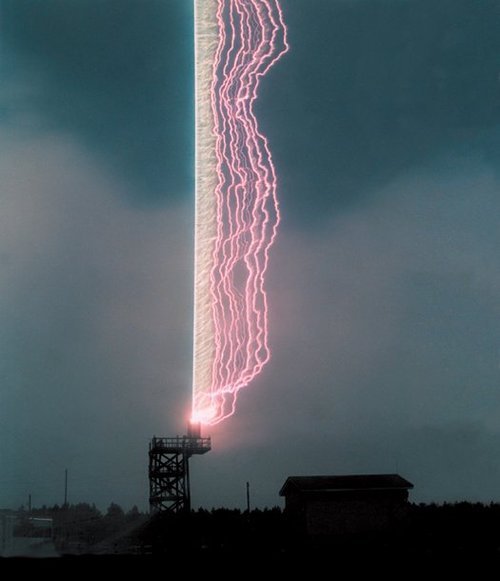
torp8719
Shared posts
Apparel The Bay: Clarks Black Desert Boot 50% off now $80 (reg $160)
http://www.thebay.com/eng/mens-today...-thebay/212981
Managed to pick me up a pair.:)
Some sizing still left at the time of writing this...
wobbleinthehox: apparently i’m not enthusiastic enough about...
Under $25 Sale at Chapters: Crane Note Cards $4.50 (was $28), Deluxe Green Lantern Costume 75% off + More
 |
Chapters.Indigo.ca is running a free shipping on all orders promo through June 6 and there are some great under-$25 deals to be had! Here's a quick look:
There's a whole lot more to choose from, but the free shipping promo ends tomorrow at midnight, so hurry up and shop! |
Travel Icelandair Toronto to Amsterdam Sept. Oct. $698 return (all in)
The dates above are sample dates. You may find other dates at the Icelandair website.
Layover in Reykjavik, Iceland is less than two hours at most, for one sample return flight I checked. Check your own selected dates to make sure.
Fare $698 return (all in).
The Princess
Matt Clarke has started a YouTube series called Convos With My 2 Year Old. In it, he recreates conversations with his daughter Coco. I'm sure the words were exactly the same, but common sense tells me that the original wasn't nearly as creepy as it seems when Matt plays the part. Look at that adorable little girl -who wouldn't want to play the princess for her? -via Viral Viral Videos
Embarrassing Moments in Engineering (and What They've Taught Us)
Remember that time you gave that long and tearful toast at your brother's wedding, only to find out later that you had a huge chunk of spinach stuck in your teeth? Or the time you stole that basketball and shot that brilliant last-second 3-pointer into the other team's basket? Or what about when you built that giant highway bridge for the city and it suddenly collapsed one day? On second thought, that last one is its own special kind of embarrassing. And one for which you'd probably trade a million spinach-toothed moments. So take comfort in knowing that, if nothing else, your bad hair day didn't put anyone in danger or make the nightly news.
Tacoma Narrows Bridge is Falling Down
Tacoma, Washington, 1940
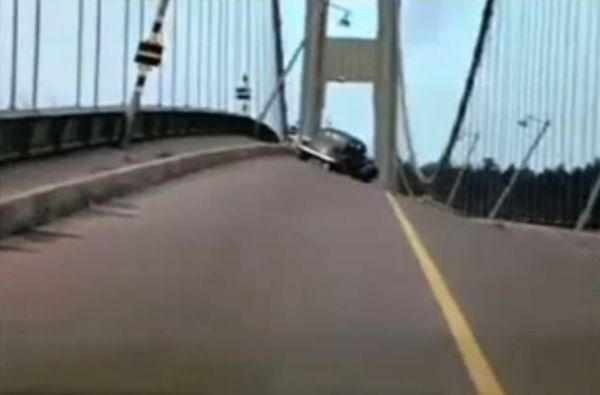
While buildings and bridges are made to bend in the wind, the engineers behind the Tacoma Narrows Bridge might have benefited from heeding a different aphorism: everything in moderation. Stretching 2,800 feet above the riverbed, the Tacoma Narrows Bridge was (at the time) the third-longest suspension bridge in the world, behind the Golden Gate in San Francisco and the George Washington in New York City. Its sleek design incorporated a roadbed only 39 feet wide, making the bridge far more slender and light than its contemporaries. But it was also a lot more flexible.
The simple fact is that any structure built without enough "give" is more likely to break in a strong wind. There's no shortage of mathematical formulas for calculating how flexible a structure should be. Yet, the Tacoma Narrows Bridge was only one-third as stiff as common engineering rules dictated. Even in modest winds, the roadway oscillated up and down several feet, quickly earning it the nickname Galloping Gertie.
While drivers found the undulations unsettling, the bridge seemed steady enough from the outset—at least to everyone except University of Washington engineering professor Bert Farquharson. Worried that it was far too flexible, Farquharson began studying the bridge in an attempt to uncover what sort of retrofits might improve its stability. As part of his investigation, he showed up at Tacoma Narrows on the morning of November 7, 1940, to film the movement of the bridge. His timing was eerily coincidental. As he was shooting, the Tacoma Narrows Bridge began heaving, and soon collapsed.
The Moral: It's o.k. to be a stiff. Materials like wood, metal, and concrete vibrate when they're struck—whether it's your fork hitting a wine glass (causing it to ring) or wind pushing across the roadbed of a bridge. If sustained, the vibrations can build to dangerous levels. It's like pushing someone on a swing; when they reach the back-most point in the oscillation, the same light push over and over will make the swing go higher and higher. You don't have to push harder each time; you just have to push repeatedly at the right moment. Similarly, if wind pushes a roadbed steadily for long enough, it can oscillate higher and higher, creating what's known as resonance.
The antidote is torsional rigidity, which is just a fancy way of saying a resistance to twisting. In the case of the Tacoma Narrows Bridge, the undulating roadbed caused alternating tension and slack in the support cables, creating a twisting motion. The action eventually became so violent that the cables snapped, and enormous sections of the bridge fell into the water below. To prevent this, Farquharson had suggested the addition of stiffeners along the roadbed. Indeed, had this retrofit been made, the collapse might have been avoided.
Citicorp Center's Close Call
New York City, 1978
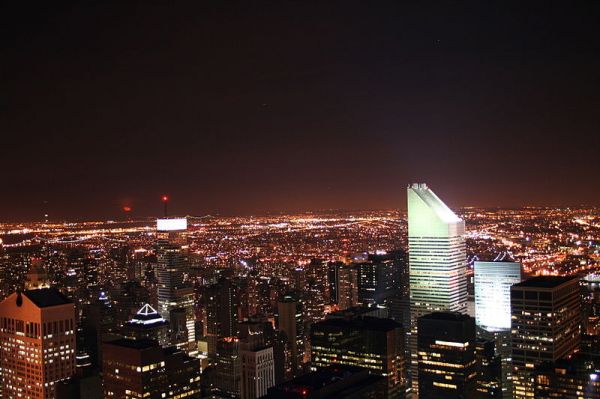 (Image credit: Amar Raavi)
(Image credit: Amar Raavi)
Talk about narrowly averting disaster. When the Citicorp Center in New York was completed in 1977, it added a dramatic, sloping peak to the city's skyline. But less than a year later, the building's chief engineer, William LeMessurier, helped it avoid destruction by razor-thin margins.
LeMessurier faced a unique situation when it came to designing the Citicorp Center. In the early 1970's, the banking behemoth was looking for a new headquarters and had its eye on a vibrant square block in midtown Manhattan. There was just one small problem: the historic St. Peter's church sat on the block's northwest corner. While the clergy wouldn't let Citicorp tear down the church, after a little negotiating, they did agree to let the bank use the airspace above it. This allowed the engineering team to form a novel architectural plan: build the 59-story rectangular tower atop four massive, nine-story-high pillars so that it actually hovered over the church.
Having positioned the building on what essentially amounted to stilts, LeMessurier knew he would have to make the structure especially resistant to strong winds. To help stabilize it, he embedded special braces in the Center's frame every eight stories or so to prevent the skyscraper from bending too far. What's more, LeMessurier devised an additional (and unique) way to counter any swaying that might occur. At the base of the building's steeply angled roof, he placed a giant pendulum-like mechanism called a tuned mass damper—a 400-ton block of concrete resting on a film of oil and held in place by huge springs. If winds rocked the tower left or right, the block would slip in the opposite direction, counteracting the sway. The skyscraper was the first in the United States to sport such a device.
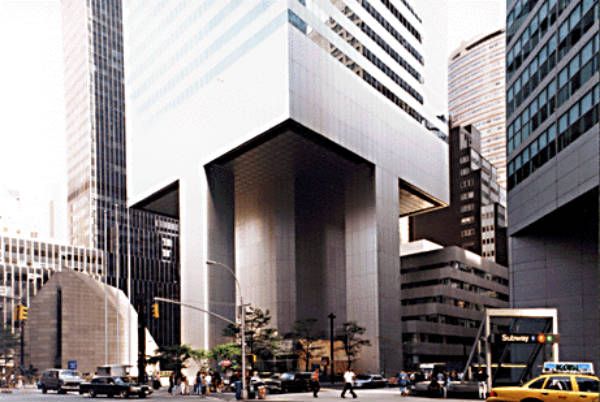
When the Citicorp Center opened, all seemed well. But less than a year later, LeMessurier got a phone call from an engineering student in New Jersey claiming that the building's four columns (positioned at the center of the sides instead of at the corners to avoid the church) were improperly placed, making it susceptible to what sailors call quartering winds—winds that would hit the building across its vertical corners, pushing on two sides at once. LeMessurier assured him they were fine, but it prompted him to review details of the design for his own students at Harvard—and thankfully so.
That's when LeMessurier got some bad news. The skyscraper's builders broke it to him that they hadn't welded the wind braces' joints together, as LeMessurier had prescribed, but simply bolted them. This met code and saved a good deal of money, but it wouldn't allow the joints to hold in winds above 85 mph—like those that accompany, oh, say, a hurricane. True; hurricanes aren't exactly common in New York City, but LeMessurier wasn't going to take any chances.
During what had to be a rather humiliating meeting with Citicorp, LeMessurier informed the bank that it needed to make additional retrofits to the building. As not to scare the employees (or let the building's problems leak to the press), they launched a plan to make the adjustments in a more, shall we say, subtle fashion. An army of welders worked the graveyard shift seven days a week and bound two-inch-thick steel plates over all 200 joints.
The Moral: Own up to your mistakes. Roughly a month before the welding project was completed, weather forecasters predicted that Hurricane Ella was headed directly for the Big Apple. The welders tried frantically to finish the retrofits early, but ultimately, the bank had to go to city authorities and warn them of the possible catastrophe they were facing. Emergency officials secretly formed a massive evacuation plan for midtown and crossed their fingers. LeMessurier (and Manhattan) finally caught a break as Ella veered out to sea.
By the time the welders and carpenters finished, the building was one of the strongest in the country. Though justifiably annoyed, Citicorp executives commended LeMessurier for coming forward with his concerns, even though his initial work had met all code requirements. And fortunately for all the engineers involved, the entire fiasco was kept under wraps thanks to a newspaper strike that coincided with the events. Virtually no one knew about it for more than a decade, until LeMessurier released a report about the ordeal titled, "Project SERENE," an acronym for Special Engineering Review of Events Nobody Envisioned.
The Millennium Bridge's Not-So-Grand Opening
London, June 10, 2000
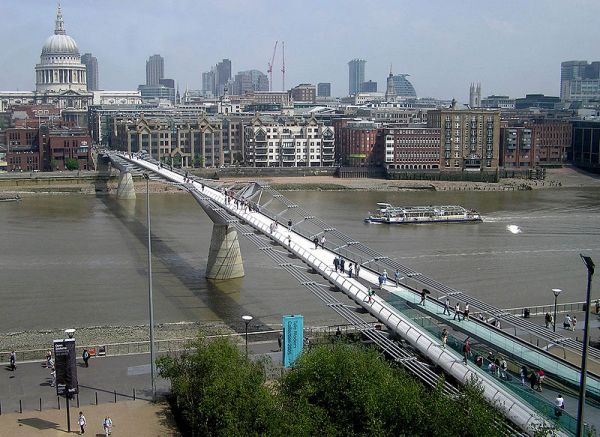
The world might have avoided a Y2K disaster at the dawn of the new millennium, but it wasn't immune to the follies of bad engineering. On the morning of June 10, 2000, the Millennium Bridge in London opened with great fanfare. Only two days later, it closed with a sigh of relief from hundreds of nauseated pedestrians.
Intended as a high-profile commemoration of the 21st century, the Millennium footbridge was meant to convey a new, innovative spirit. It was given a prime location smack in the middle of downtown, connecting St. Paul's Cathedral on the north bank of the River Thames to the Tate Modern Gallery on the south. Its cutting-edge design included an aluminum deck supported from underneath by two Y-shaped frames, rather than the more common overhanging arches. The final product was sleek, futuristic—and a wee bit wobbly.
As with all bridges, the Millennium engineers designed the span to sway slightly in the wind so that it wouldn't snap. But even the light breeze blowing on the morning of June 10 was enough to make the $26 million bridge swing like a ride in a carnival funhouse. In an attempt to keep their balance, the thousands of inaugural pedestrians began to do what anybody on a rocking platform does: step in time with the rhythm of the swaying, shifting their weight from side to side to counter the motion. The result was something engineers call synchronized footfall. As more people moved in unison, more force was added to the lateral motion, and the rocking increased. Eventually, the sway was so strong that it threatened to loft people overboard. Police quickly restricted access, and only two days later, city officials closed the bridge indefinitely.
The following year, at a cost of more than $7 million, the bridge's engineering firm and a New York-based contractor fixed the problem. Underneath the deck, they installed some 87 dampers—huge shock absorbers—to reduce the forces of synchronized footfall. The bridge reopened on January 30, 2002, but this time around, getting people to cross was going to take some convincing. City officials offered walkers free sandwiches, and even had a Southwick mayor and a London town crier dressed in Victorian garb lead the way. Still, just to be on the safe side, numerous British Coast Guard rescue vessels were placed downstream. Fortunately, the bridge proved rock solid.
The Moral: Beware of people. By the time it reopened, the Millennium Bridge (albeit inappropriately named by this point) was safe, but its engineers were roundly criticized for not having heeded the lesson of synchronized footfall. After all, even Napoleon's troops knew about its dangers. His armies always marched in unison, but whenever they came upon a footbridge, all the soldiers would alternate their stepping cadence precisely to keep the bridge from breaking.
If that weren't enough, the Millennium Bridge engineers had a much more recent call to warning. On May 24, 1987, a major "pedestrian jam" occurred on the Golden Gate Bridge, when more than 250,000 people swarmed up the ramps as part of the bridge's 50th anniversary celebration. The sheer weight of the crowd flattened the roadway (more than motor vehicles could have), putting enough slack in the suspension cables to allow the roadbed to swing. The pedestrians began stepping in time with the motion and the sway increased. Police managed to calmly dispurse the crowd, but the incident was an eye-opening reminder for engineers that even one of the most stable roadway bridges in the world isn't necessarily secure enough for people.
Kansai International Airport Learns to Sink or Swim
Osaka Bay, Japan; 1987 to present
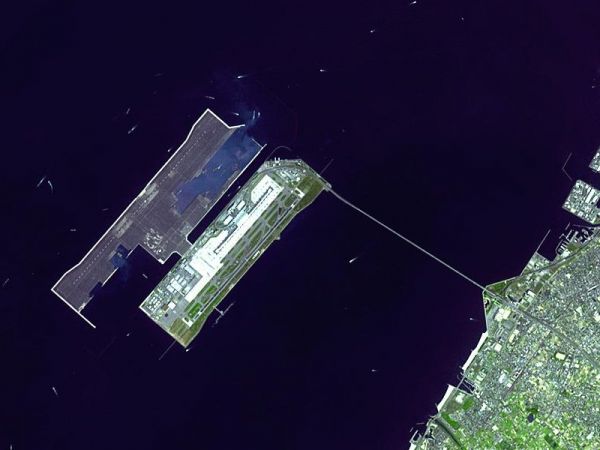
Never mind the two-dimensional cell phones and microscopic digital cameras. If you're talking mind-boggling Japanese inventions, think floating airport. In a country where open land is pretty hard to come by, the Japanese government commissioned the construction of an airport for the growing cities of Kobe and Osaka in the only available space around them: the clear, blue sea.
In 1987, builders started construction on a manmade island a mile and a half offshore in Osaka Bay. To build the 2.5 mile-long, half-mile-wide piece of land, they erected a giant box of rock and concrete in the water and filled it with even more rock, gravel, and sand. The idea was simple, but the process of carrying it out was anything but. It took three years, 10,000 workers and 80 barges to level two mountains and shuttle the material to sea before the box was filled.
Geologists and hydro engineers knew the soft clay seabed would compress from the weight of the "island," but they allowed for settlement and filled the box high enough above water to negate the effect. Unfortunately, their calculations were way off. What they didn't anticipate was the amount of water in the clay bed that would ooze out, as if seeping from a sponge. By 1990, the island had already sunk 27 feet. In an attempt to counter that sinking feeling (and heighten the island surface), workers leveled a third mountain to come up with the amount of earth needed.
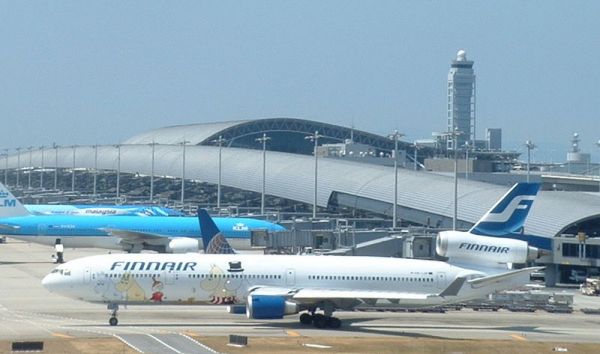 (Image credit: Carpkazu)
(Image credit: Carpkazu)
Complicating matters even more were the builders' plans to erect a mile-long terminal alongside the runway. Engineers knew that if the ends or middle of the span sank at different rates, it would tear the terminal apart. To compensate for the varying rates of sinkage, they decided to rest the terminal's glass sides on 900 cement columns sitting atop two foundation walls. As parts of the walls sank, maintenance crews could jack up certain columns, slip a hefty steel plate beneath them, and level out the terminal as needed.
The Moral: Make sure to overbudget. Thanks largely to the steel-plate system, the Kansai International Airport has proved shockingly stable. Since opening in 1994, the single-terminal marvel has survived the 1995 Kobe earthquake (centered only 18 miles away) and a 1998 typhoon packing 200-mph winds.
Nevertheless, the island continues to sink about six inches per year, which means engineers are still stuffing plates beneath columns. All in all, it's a pricey project. Kansai Airport cost more than $15 billion (almost $5 billion over budget) and is deeply in debt, losing more than $500 million a year in interest payments alone. Some airlines won't use the facility because of high landing fees, and air traffic remains below profitable levels. Amazingly, the regional government is already busy building another nearby island of even larger proportions to support a second runway for the airport.

The article above written by Mark Fischetti, is reprinted with permission from the March-April 2005 issue of mental_floss magazine.
Don't forget to feed your brain, subscribe to the magazine and visit mental_floss' extremely entertaining website and blog!
The Extinction Orchestra
 [Images: From Marguerite Humeau's Opera of Prehistoric Creatures; photos by Stuart Bailes and Felipe Ribon].
[Images: From Marguerite Humeau's Opera of Prehistoric Creatures; photos by Stuart Bailes and Felipe Ribon].Designer Marguerite Humeau reconstructs the voices of extinct animals based on speculative extrapolations from their skull structure.
As she described her work in an interview with We Make Money Not Art last month, the project is an attempt "to resuscitate the sound of prehistoric creatures by reconstructing their vocal tracts," casting large resonation chambers that then whistle, bleat, bellow, and moan, offering fictionalized bodily soundtracks for multi-million year-old landscapes.
Appropriately called The Opera of Prehistoric Creatures, it includes sonic reconstructions of three species of extinct mega-fauna, including the Ambulocetus, or "Walking Whale," an Entelodont, or the terrifying-sounding "Terminator Pig," and a Mammoth Imperator.
 [Images: From Marguerite Humeau's Opera of Prehistoric Creatures; photos by Felipe Ribon Dirk van den Heuvel].
[Images: From Marguerite Humeau's Opera of Prehistoric Creatures; photos by Felipe Ribon Dirk van den Heuvel].Partial reconstructions of their skeletons, combined with the speculative sounds of their long-lost calls, form what Humeau calls "semi-real, synthetic ruins." They stand like bleached monuments in the gallery space: resurrected animal bodies singing dead songs for the 21st century.
Briefly, and unrelatedly, I'm reminded of the extraordinary point made in Adrienne Mayor's fantastic book The First Fossil Hunters, where we read that one of the reasons for ancient myths of cyclops, giants, and titans was, in effect, bad paleontology. In other words, the ancient Greeks and other civilizations around the Mediterranean simply got their fossils wrong, reconstructing old bones not as the mammoths they really were—
 [Image: From The First Fossil Hunters by Adrienne Mayor].
[Image: From The First Fossil Hunters by Adrienne Mayor].—but as truly massive, humanoid forms with odd, singular holes in the middles of their skulls (actually a nostril, not a cyclops eye), lording over tiny humans who quaked miserably beside them.
 [Image: From The First Fossil Hunters by Adrienne Mayor].
[Image: From The First Fossil Hunters by Adrienne Mayor].In any case, you can listen to Marguerite Humeau's soundscape of extinct animal calls here.
Ice Cream Roses
I couldn’t care less about roses, unless they are made of ice cream.
Excel Spreadsheet Art
Artist Tatsuo Horiuchi uses Excel spreadsheets to draw elaborate Japanese motifs. Excel Spreadsheet Art!
Zen Bedroom
Beautiful minimal bedroom with built in storage designed by Studio Oink. Definitely will circle back to this image when we are tackling the project of building loft beds in our kids rooms.
This Week in Theatre: Kamp (Camp), El Camino, The Barber of Seville, The Bone House
 This week in theatre rounds up the most noteworthy live theatre playing right now in Toronto. It includes just-opened shows as well as productions that are about to close.
This week in theatre rounds up the most noteworthy live theatre playing right now in Toronto. It includes just-opened shows as well as productions that are about to close.
Kamp (Camp) / Enwave Theatre / 8:00pm/2:00pm / $15-$30
It's extremely difficult to represent on stage the trauma suffered at concentration camps during the holocaust. It was human suffering at its most extreme. But Hotel Modern from the Netherlands is ambitious in its play about Auschwitz, filling the stage with thousands of eight-centimetre-tall puppets as stand-ins for the prisoners. Alongside the puppets, performers move through the set with cameras while the audience plays witness.
El Camino or The Field of Stars / Videofag / 8:00pm/2:00pm / $15
Halifax theatre artist Stewart Legere travels to Toronto to premiere El Camino or The Field of Stars, a complex solo show featuring a story about a young and in-love queer couple battling their own internalized homophobia. Throughout the course of the play, Legere takes the audience on a trip to Italy that doesn't go as planned, as well as explores the significance of an ancient pilgrimage to France and Spain called El Camino Santiago de Compostella.
The Barber of Seville / Soulpepper - Young Centre / 8:00pm/2:00pm / $32-$62
There are so many versions of The Barber of Seville, but which one is it? The original is Pierre Beaumarchais's play of 1775, which was followed by Gioachino Rossini's comic opera of 1816 (the most well known). Soulpepper has turned to the updated version from Michael O'Brien who pulls from both the play and opera. It's directed by Leah Cherniak and features Dan Chameroy as Figaro, Gregory Prest as Count Almaviva, and Courtney Ch'ng Lancaster as Rosina.
The Bone House / The Storefront Theatre / 8:00pm / $20
Marty Chan's The Bone House is billed as a psychological thriller which examines human nature's more perverse and twisted side. The play focuses specifically on serial killers and what, if anything makes them tick. Red One Theatre Collective promises a "bone-chilling" and "immersive" night with cast members Kurt Spenrath, Asante Tracy, Claire Armstrong, and John Fleming.
carried away on the crest of a wave / Tarragon Theatre / 8:00pm/2:30pm / $27-$53
David Yee's play is composed of short vignettes which serve to illustrate how far and wide tragedy can spread from one event. The playwright takes an ambitious global approach, crossing continents and weaving through families, that has mixed results. While strong segments reverberate through a mesmerizing set from Camellia Koo, others are less successful under the weight of dark, dramatic plot reveals. Check out our full review.
Photo from Kamp
Harvey's Coupon (via Facebook): Buy One Burger + Drink and Get a Burger Free
 |
Harvey's has just posted a new coupon on their Facebook page! Through June 3, 2013 you can print this coupon (or display it on your smartphone) and get a free burger with the purchase of any burger and 20 ounce drink (or a burger combo). The coupon may not be combined with other offers and is valid only at participating locations. |
New Japanese Meme: Pretending to be an Anime Giant
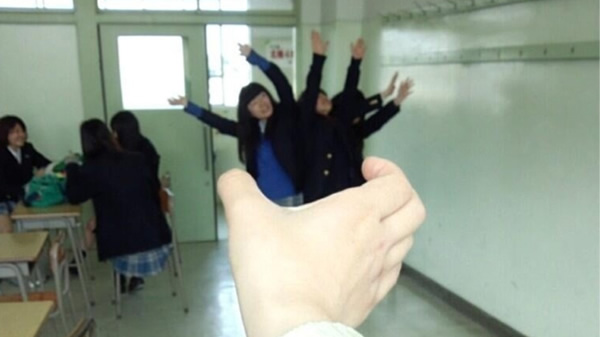
The anime fight scene photo meme is SO last month. The new hotness in Japan's anime-based photo meme is pretending to to be a giant toying with puny humans. The forced perspective photography trick meme is based on the manga Attack on Titan, which tells the story of a city being attacked by human-eating giants.
Brian Ashcraft of Kotaku has the scoop: Link

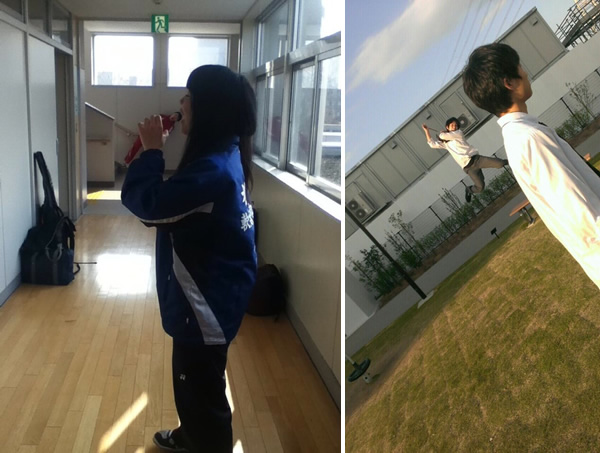

Pages from the Official Star Trek Writers' Guide, 1967
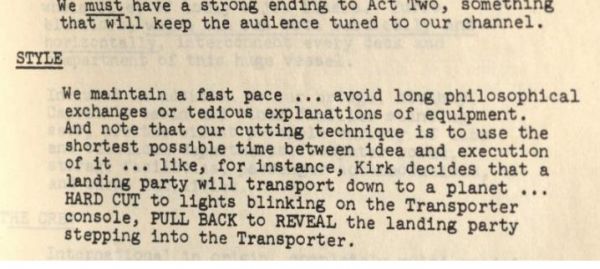
To help new writers on the TV series Star Trek, a 31-page guide was typed up to lay out the rules of the series and ensure continuity of style. It addressed each character's personality, the basic mission of the Enterprise, and the type of stories that work, among other things. Slate has three pages of the guide; the rest are at Harvard’s Houghton Library. Link
Groupon: BioShock Infinite (PC) $34.99 + Cash Back (Reg. $59.99)
 |
One of the best video games ever made is now on sale as Groupon is selling Steam keys for BioShock Infinite for just $34.99 -- down from $59.99 and a sweet deal if you've been waiting for the popular first person shooter to go on sale. Factor in the 3.25% Cash Back and you've got a pretty sweet deal on a very highly rated game and one that's still fairly new. More information on BioShock Inifnite can be found here but all you really need to know is that it got some very good reviews, has an unforgettable storyline and features Steam Achievements. The game is rated M for Mature so you'll want to keep this one away from the kids, but that doesn't mean you still can't enjoy it. The deal is live for the next four days but quantities are limited. If you hope to get in on the deal, you'll want to place an order now. Don't forget to check out using the green links above to earn 3.25% Cash Back on your purchase via RedFlagDeals.com. |
Elect [Telus] $75 credit towards a white smartphone when you trade in a Blackberry
So, here is the only fine print: While quantities last. Available on the white Samsung Galaxy S III™, Samsung Galaxy S4™, Samsung Galaxy Note™ II, Samsung Galaxy Ace II X™, iPhone 4, iPhone 4S and iPhone 5.
All BlackBerry models except BlackBerry® Q10 and BlackBerry® Z10 are eligible.
What do you think the odds are that trading in 6 BB's that you would get a $450 account credit?
Future Shop: Koodo Samsung Galaxy S IIX Smartphone $100 + $75 GC on Select Plans (Ends 5/12)
torp8719Should I return mine and get this?
 |
If you're with Koodo and need a new phone, or are thinking of switching over, there's a pretty good deal on the Samsung Galaxy SIIX for the next couple of days. Until May 12, you can pick up the popular smartphone on sale for $99.99 which includes a bonus $75 gift card on select new monthly plans. If you were itching to switch to Koodoo and don't mind going with an older, but still very capable, smartphone, this is a deal that might appeal to you. The SIIX features:
It's not the most powerful smartphone available but, at the price, we can't really complain. Just a heads up, the deal is $99.99 upfront and $150 on the Koodoo TAB -- not $100 outright. The deal is available in-store only, so you'll want to head on over to your nearest Future Shop soon as quantities are limited. The deal expires on May 12. Thanks to frankw for sharing this one with us. |







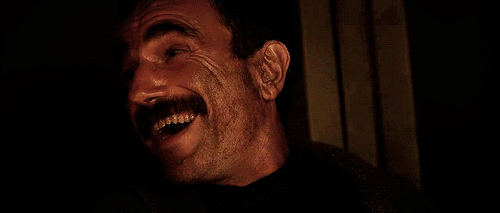



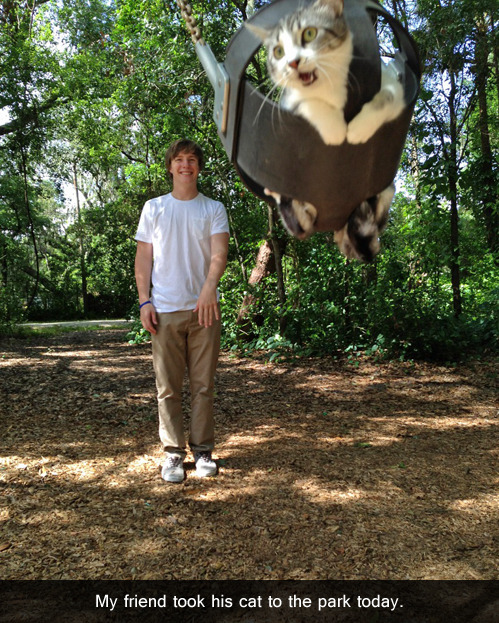




 (
( (
( (
(


